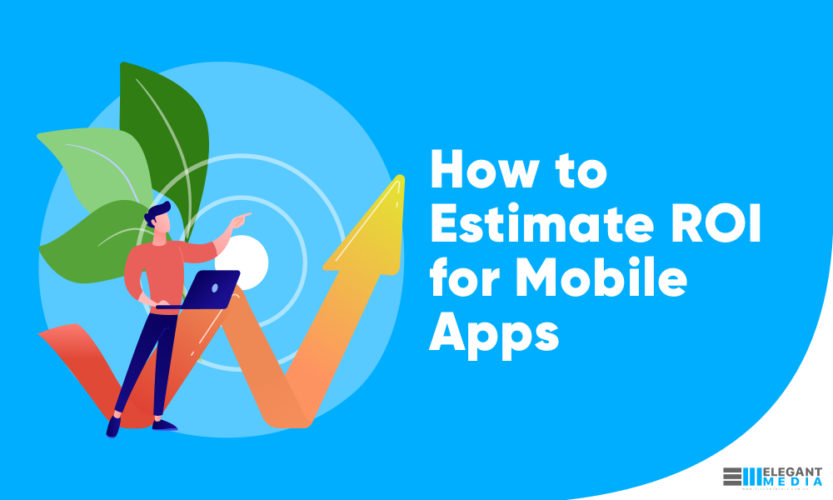When building mobile apps, developers often ignore an important first step: Determining whether it makes financial sense to build it in the first place. Measuring return on investment (ROI) of mobile apps can be difficult to do. ROI for mobile apps is certainly an important factor that needs to be assessed before moving ahead with investing in a mobile app.
There are plenty of long-form guides showcasing how to assess this ROI. However, we’ve kept it short and simple in this blog post.
Why is it Difficult to Measure ROI for Mobile Apps?
At one time, determining ROI was easy.
Until a good 10 years ago, the two ways of measuring ROI for mobile apps was whether it was paid or free.
But around the same time, several companies began implementing in-app advertising (IA) in mobile apps.
These companies were paying developers based on how many users engaged with their advertisements.
However, the correct formats that are effective when it comes to determining the ROI of mobile apps is a constantly evolving animal.
What Metrics should be Included in Estimating ROI?
The three major metrics that should be included in estimating the ROI for mobile apps are:
- Referral rates
- Bounce rates
- Average revenue per user
Gauging these three aspects will help you determine if it makes sense to build a mobile app in the first place.
The most important thing to consider when developing an app is the type of customer the app can help. If your app solves an immediate problem that impacts millions of people, you should build the app.
But what if your app solves a customer need that can be met by a variety of other tools or solutions? It might be worth building an app just to test your theory, but be prepared to dismiss the idea if it doesn’t provide enough value.
This is How you Measure ROI for Mobile Apps
It would be true to state that revenue-based metrics and cash-based metrics need to be considered when it comes to measuring the ROI for mobile apps.
However, the conversation around this is more detailed. It involves at least 5 areas that need to be looked into.
The metrics that need to be looked into are:
- Number of Users
- Number of Active Users
- App Retention and App Drop Off
- Cost per Acquisition
Let’s look into each section separately.
1. Number of Users
This is a no-brainer. Calculating the ROI of an app is based on the number of users, engagement, sales or any other metric that has a value.
So that is the first step. There are two important lessons to learn.
Lesson one: Finding the cost of the app directly influences the ROI of the app. You can’t calculate an ROI with a variable cost.
Lesson two: Look at more than one way to determine the value of your app and the amount of time users spend using the app. This time is broken down into meaningful activity and non-meaningful activity and weighted accordingly.
App-Purchase ROI = (Gross Acquisition Cost) / (Active Users)
Marketing and promotion cost is the largest line item for many app startups. The next step is to say that there is a fine line between marketing and promotion.
There is also the investment cost concerning app development that needs to be considered. However, this is a topic that deserves its own separate blog post.
2. Number of Active Users
The number of daily active users and monthly active users also determine the ROI of a mobile apps.
This growth is the result of the hard work of the mobile app developers, but it’s not always easy to determine what actually works for increasing numbers.
As it’s quite difficult to get a number of daily active users or monthly active users for an app, we usually use the number of downloads to determine it. That’s because the number of downloads and daily active users and monthly active users are quite similar. But there is a big difference between the two.
The number of downloads, or number of downloads, is calculated by the number of times users install an app over a period of time.
How can you learn more about your users?
Right now, there are two ways to learn more about your users.
First, you can manually track your users’ behavior.
If you have a mobile app, you can track the number of users who are engaged.
3. App Retention
App retention is also another metric that needs to be considered regarding the ROI for mobile apps.
If the app isn’t used and the user doesn’t return to the app, you can’t earn revenue from it. The app also needs to be used to earn revenue via in-app purchases and ads.
A lot of time and effort goes into making a mobile app that is high-quality and will meet the needs of its target audience.
By knowing how much it costs to acquire users, you’ll be able to determine how much it would cost to repurchase those lost users, allowing you to formulate a strategy to mitigate that loss.
One important metric is: Cohort retention rate. This is a metric that helps you track users’ retention rate during one month.
For instance, it’s important to study the retention rate, which means how many of the users who downloaded your app will come back and use it again.
The consequences of a poor retention rate can be devastating for your business, since a user who installed your app and then never came back to use it is a user you’ve lost forever.
This is because, when it comes to acquiring new users, an app with good app store ratings will definitely attract more users than the one with low ratings.
Nowadays, many companies are looking to cut down on their expenses. This can be achieved by hiring an app development company that offers cost-effective solutions.
At the same time, choosing the right app ideas are also important when it comes to determining the ROI of an app.
4. Cost per Acquisition
This metric determines and calculates the monetary amount required to acquire a customer by means of an app. It helps an organisation to decide whether they should invest more time and money into improving their app or to create a new one.
One of the most popular ways to optimise cost per acquisition is through offering free trials to customers or providing discounts and coupons.
When it comes to marketing and promotion, consider the cost of a user acquired through a specific campaign. This helps to know how efficient a campaign generates users and the cost of acquiring them.
As you can see, there are more key metrics to be calculated regarding the ROI for mobile apps.
You can use Cost Per Acquisition to find out how much you are paying for each download of your app.
This measures the overall cost of acquiring an app user in terms of marketing, advertising, and in-app purchases.
It is common in the field of mobile marketing that the cost per acquisition is higher in mobile or digital advertising than in traditional advertising. But with the right strategy, this cost can be lowered.
Conclusion
Ultimately, building mobile apps that don’t work is a lot like sending an inexperienced artist to build a skyscraper. The end result might be a tower, but the overall structure is a disaster. At the same time, ignoring the mobile app development industry is like ignoring all common sense. You’ll end up frustrated and make poor decisions. The best course of action is the middle road.
While there is consensus that mCommerce is overtaking eCommerce in 2020, the opinion regarding ROI for mobile apps keeps evolving. As more metrics come to the fore in the years to come, there will be more formulas and opinions that will determine how best to gauge the ROI for mobile apps.






